Hands down, many consider Hawaii to be North America’s most pristine piece of land. Surrounded by water and made up of 137 islands, many flock to the region for holidays and to live. The U.S. Census Bureau reports nearly 1.5 million people reside in this North American paradise, and recent statistics show Hawaii had over 9 million visitors in 2022, making a pre-pandemic comeback.
So many cities and towns make up Hawaii, all fitting into five counties: Hawaii, Maui, Honolulu, Kauai, and Kalawao. The breakdown of Hawaii’s top 10 largest cities reveals distinct population, landscape, and local economy differences.
Race, education, and economic status separate each population. Landscapes differ by rainforest and waterfall locations as well as volcanoes and coastlines. Regarding the economy, some of the 10 largest cities bring in millions, and others do not. Hawaii’s Gross Domestic Product was $98.2 billion in 2022, driven by several daily industries that fuel the local economy.
And don’t let the word ‘town’ fool you. Unlike other major North American metropolises, some of Hawaii’s largest cities are only a few miles wide. With so many differences in this state’s demographics compared to the rest of America, Hawaii is made even more unique through its 10 largest cities.
1. Urban Honolulu
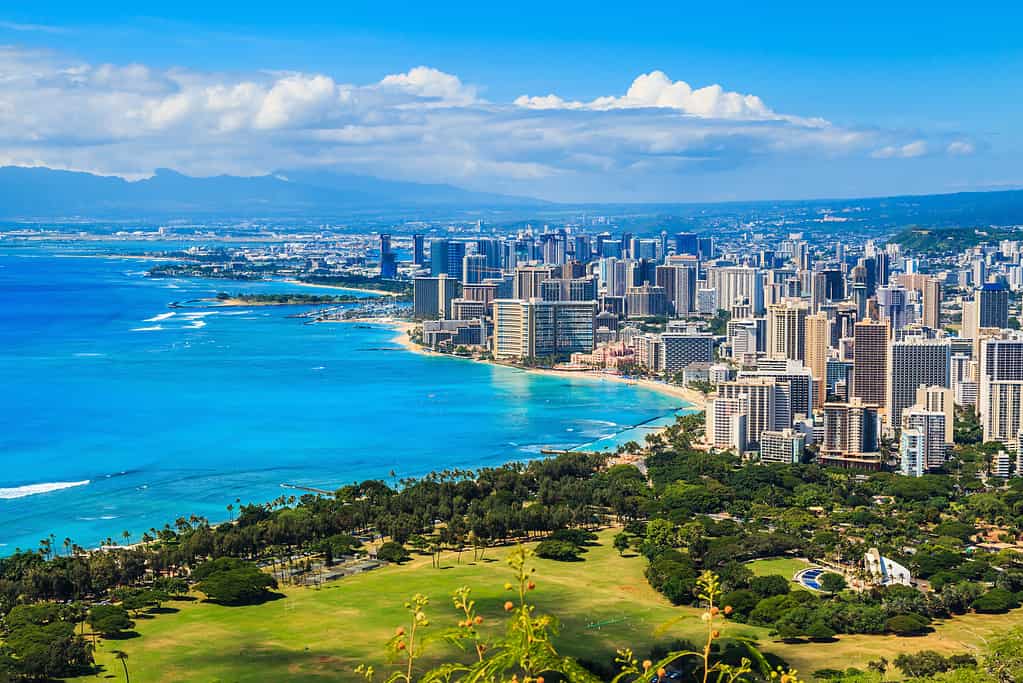
Honolulu, HI, is home to Waikiki Beach, one of the most popular tourist spots in the state.
©zabela23/Shutterstock.com
Just like it sounds, Urban Honolulu is the section of the island with restaurants, shops, and recreation on some of the most beautiful beaches in the state. With so much to do and see, it is no surprise that this city is Hawaii’s largest city by population.
Population
Urban Honolulu’s population is slightly more than 343,000, with the county inhabiting more than 1 million residents. Population trends in the region vary based on age, sex, and ethnicity. The Asian population is the largest at more than 53%. The largest Hawaiin City has more than 20% of residents 65 years or older and 49% female residents. Over 38% of the Urban Honolulu population has a bachelor’s degree or higher. The population per square mile in Urban Honolulu is 5,796.
Total Area
Urban Honolulu is 69.4 square miles, including the famous island of Oahu and surrounding smaller islands. The average temperature ranges between the 60s and 80s, rarely dropping below 60 degrees. Notable Honolulu regions include Diamond Head and Pearl Harbor. Many ridges and valleys make up the terrain sculpted by volcanic activity.
Economic Impact
As the capital city and port of Hawaii, Honolulu also boasts a state university with a significant economic impact on the area. The median household income in Urban Honolulu is just over $76,000 annually, with a poverty rate of 11%. Foodservice employs over 11% of the capital city’s workforce, while office support, retail sales, and transportation services are among Honolulu’s other top employers.
2. East Honolulu
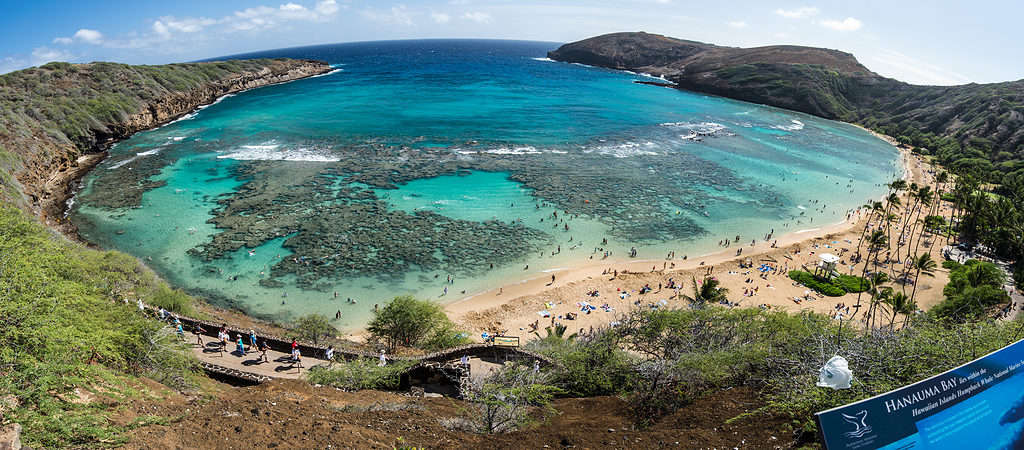
Hanauma Bay Beach in East Honolulu is a top snorkeling spot.
©Sanchai Kumar/Shutterstock.com
A part of Honolulu County, East Honolulu is the second largest Hawaiian city, sitting directly east of Honolulu City. It shares just as many beautiful beaches and areas as Urban Honolulu but boasts more upscale neighborhoods easily afforded with high household incomes.
Population
East Honolulu’s population is nearly 50 thousand people, comprised of more than 48% Asians and 25% White population. There is a 5.8% Hispanic population and only 0.6% African American. More than 58.9% of the population has a bachelor’s degree or higher. Up to 83.8% of the population owns a home in East Honolulu. The population of East Honolulu per square mile is 2,213 residents.
Total Land
East Honolulu has just over 23.1 miles of land experiencing alternating dry and wet seasons. The average year-round temperature ranges between 69 to 85 degrees, rarely dropping to the mid-60s. Less population means less urban life, with East Honolulu having more residential than commercial properties but still having large white beaches. Hanauma Bay and Sea Life Park are popular attractions.
Economic Impact
With a high median salary of $174,795, residents can afford the affluent neighborhoods of East Honolulu. The poverty rate of East Honolulu is just 3.3%, showing the distinct financial difference between the two adjacent largest cities. The healthcare and educational fields are two of East Honolulu’s biggest employers.
3. Pearl City

An overall aerial view of Pearl Harbor, which is the state’s largest industrial employer.
©PH1 Javner, U.S. Navy, Public domain, via Wikimedia Commons – Original / License
Pearl City fits its name as a smaller region following the two largest. Only several miles from northwest Honolulu, Pearl City also reflects its infamous past, representing the north shoreline of Pearl Harbor, a region notable for its World War II history.
Population
Pearl City has a population of nearly 45,000 people, which, like other large Hawaiian cities, comprises a considerable Asian population of 51.4%, with two or more races making up 24.6% of the residents. Only 1.6% of the population is African American. Females and people 65 years and older dominate the population, at 49.8% and 25.5%, respectively. Those with a bachelor’s degree or higher only comprise 36.3% of the population. The population per square mile of Pearl City is 4,966 residents.
Total Land
The north shore of Pearl Harbor, Pearl City, makes up 9.2 square miles of Oahu. The subtropical weather of Hawaii’s third largest city is windy, with average temperatures around 87 degrees. Winters are milder, averaging 73 degrees. The most popular places in Pearl City surround its significance in World War II, including both The Pearl Harbor National and Aviation Museums. The region has long, green hills noted for cattle grazing along the harbor.
Economic Impact
Pearl City has a positive economic impact by bringing thousands of visitors to the Pearl Harbor sites. The average median household of nearly $109,000 contributes to the local economy. Up to 70.6% of Pearl City residents own their homes, positively influencing the tax levy. Pearl City maintains a 4.1% poverty rate. Health care, public administration, and retail trade employ more than a third of Pearl City’s workforce, while Hawaii’s largest industrial employer is the naval shipyard.
4. Waipahu
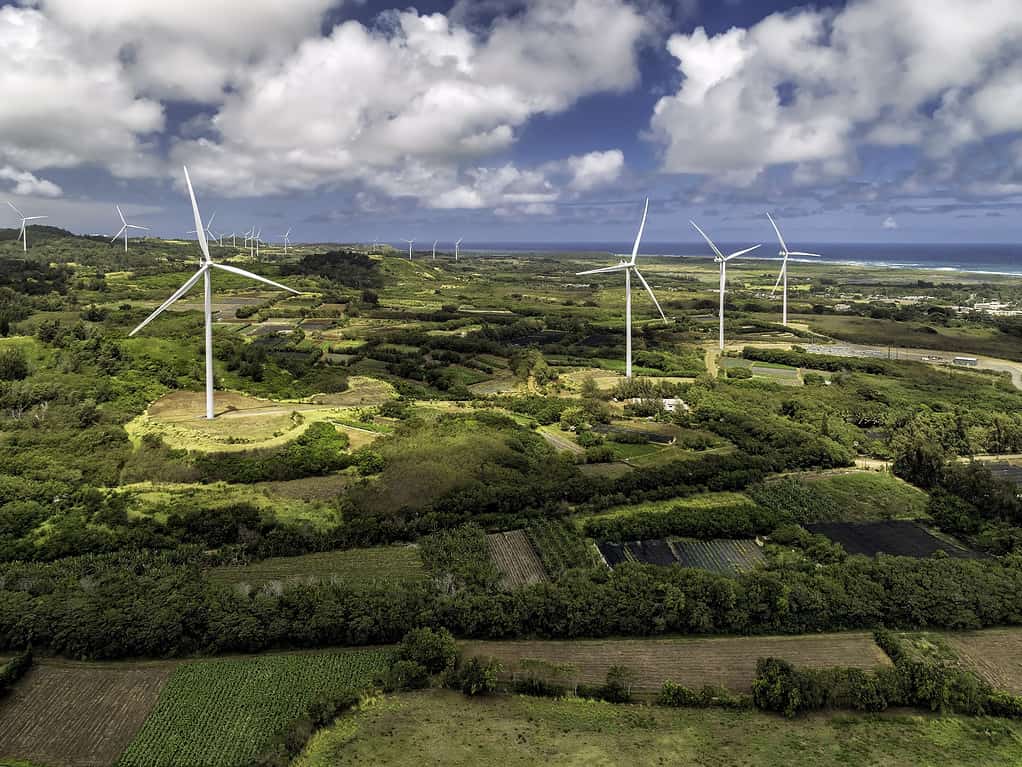
The south-central part of Oahu, Waipahu is a family-friendly destination.
©marchello74/iStock via Getty Images
The city of Waipahu touts a sweet history as a former sugar plantation region on Oahu. It’s known for its diamond shape and family-friendly attractions.
Population
Waipahu has a population of nearly 45,000 residents, with up to 67.9% of Asian descent. Up to 13% of the people in Waipua are Native and Pacific Islanders, while 6.5% are Hispanic. 55.4% of the residents own a home, and 17.9% have a bachelor’s degree or higher. The population per square mile in Waipahu is 16,237 residents.
Total Land
Waipahu is 2.6 square miles and sits on the south-central part of the Oahu. Temperatures in the region range from 66 to 87 degrees and are rarely any higher or lower. Hiking the Waipuhia Falls Trail, also noted as the Upside-Down Waterfall, is why many visit the city. It is one of many hiking trails on the Big Island many come to climb or ride. Hawaii’s Plantation Village and Central Oahu Regional Park, comprised of up to 269 acres, are also some of Waipahu’s top attractions.
Economic Impact
The average median salary in Waipua is $83,671. Waipuhia has one of the highest poverty rates of the 10 largest cities, at 10.8%. Government agencies, including the Waiawa Correctional Facility, education, and tourism, contribute to the local economy.
5. Hilo
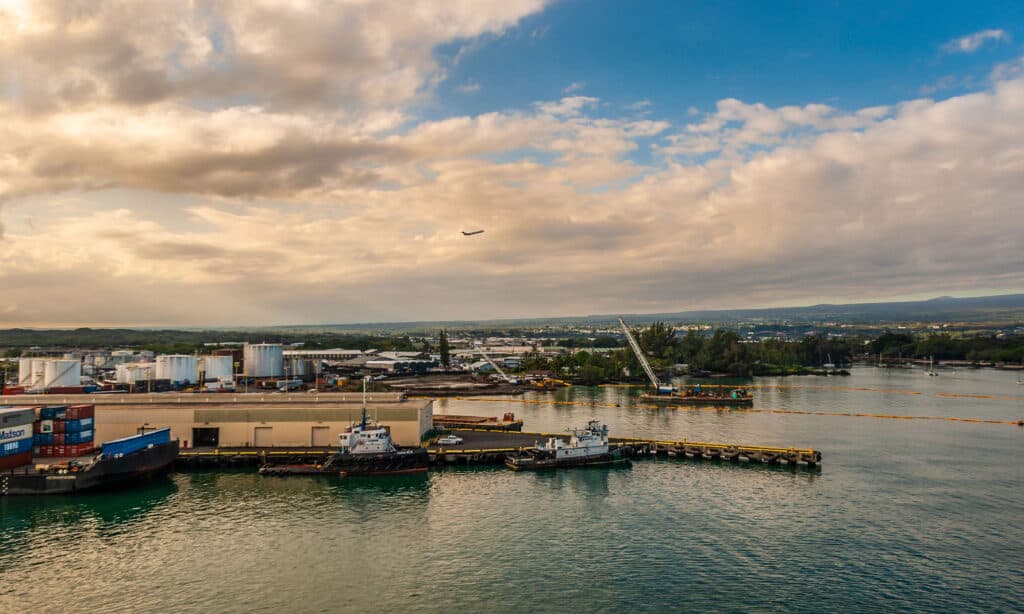
Hilo is a great place to see the stars, especially at Imiloa Astronomy Center.
©iStock.com/ClaudineVM
As a primary access to Hawaii, Hilo welcomes visitors to the Big Island on the northeastern side. Hawaii’s county seat, Hilo, is a hustle and bustle of government activity mixed with tourism.
Population
The population of Hilo is over 44,000. Unlike other top-10 cities, the largest ethnic population is not Asian but rather two or more races at 38%. The Hispanic population is 14.6% and 3.6% African American. Females comprise 51.3% of the people, and 21.8% are 18 or younger. The population per square mile in Hilo is 824 residents.
Total Land
Hilo is up to 53.6 square miles on the eastern windward side of the island. It is home to two volcanoes: Mauna Loa and Mauna Kea. Waterfalls, rainforests, and gardens make up Hilo, a surviving plantation town. The city also hosts the Imiloa Astronomy Center, Hawaii Volcanoes National Park, and the Lili’uokalani Gardens, 30 acres of Japanese fishponds and rock gardens. Hilo’s temperatures are rarely below 60 or higher than 86 degrees.
Economic Impact
The median household income in Hilo is $70,356 annually, and the poverty rate is 16.1%. The high poverty in Hilo makes the city less profitable than other top 10 cities. Educational services employ 14% of Hilo’s workforce, while healthcare, retail trade, and food services are among Hilo’s other leading economic drivers.
6. Kailua

Kailua is one of the most popular tourist spots on the island of Oahu.
©iStock.com/mihtiander
White sandy beaches define Kailua, also famous for lush green hillsides that overlook the ocean. Good food and shopping spots also make this Hawaiian city famous.
Population
The population of Kailua is just over 40,000 people. It is diverse in gender and age, with 50.2% of the population female and 19.6% over 65. The White population is the highest at 43.8%, followed by Asians at 20.3%. Up to 21.8% are 18 or older, and 50.3% have a bachelor’s degree or higher. The population per square mile in Kailua is 5,212 people.
Total Land
This city is near Kailua Bay on the windward coast of Oahu. Kailua is 7.7 miles and is renowned for the beaches of Kailua and Lanikai. Another famous attraction in Kailula is the Lanikai Pillbox Hike, which runs up Kaiwa Ridge and is renowned for two World War II fortresses found along the way. Yearly Kailua temperatures vary from 69 to 84 degrees.
Economic Impact
The median household income is $133,327, and the poverty rate is 4.3%. The healthcare field, public administration, and educational services are among Kailua’s top employers. Tourism is also an economic driver, with thousands flocking to the two famous beaches.
7. Kaneohe
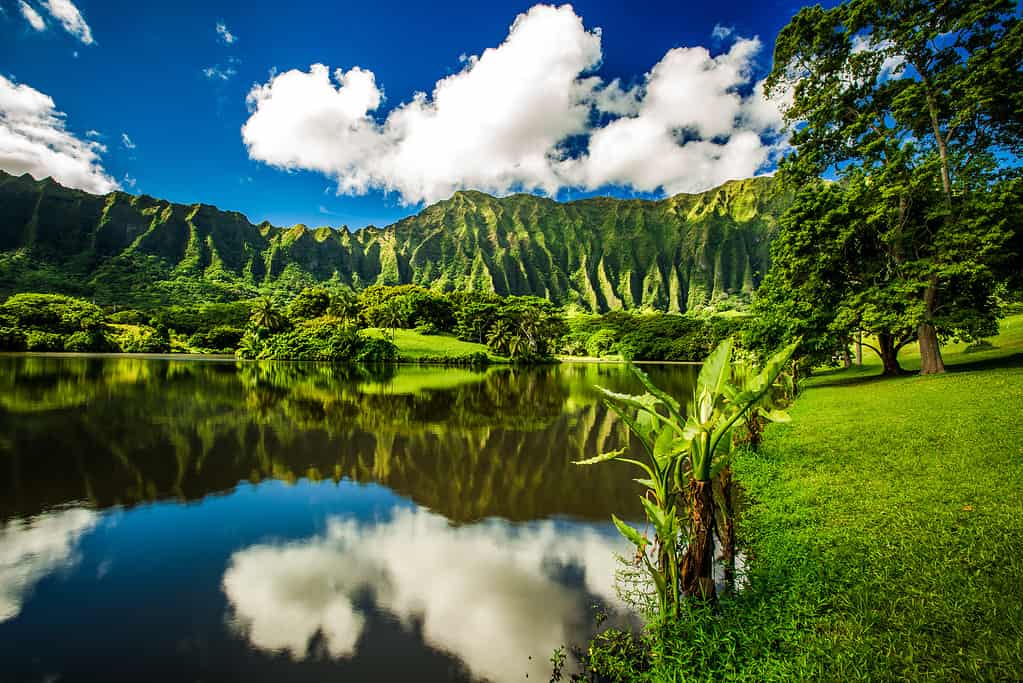
The Ho’omaluhia Botanical Gardens in Kaneohe is popular for its lush green landscape.
©Shane Myers Photography/Shutterstock.com
Upscale homes along Kaneohe Bay are just one feature that stands out in this Hawaiian city. The urban and rural landscape offers a bit of excitement and quiet.
Population
The population of Kaneohe is more than 37,000 people, with 39.8% Asian residents and 30.8% of locals of two or more races. Up to 7.9% are Native Hawaiian or Pacific Islanders. The population of adolescents is slight at 4.8%, and the elderly population is much higher at 23.2%. The population per square mile of Kaneohe is 5,720 people.
Total Land
Kaneohe is 6.54 square miles. Temperatures range between 70 and 80 degrees and rarely drop much lower. The city runs from Koolau Range to Kaneohe Bay. The famed 400-acre attraction Ho’omaluhia Botanical Gardens is Kanehoe, also famous for the Kanehoe sandbar.
Economic Impact
Residents of Kanehoe have an average median income of $118,770, much higher than other of Hawaii’s largest cities average. Poverty is 5.5% in Kaneohe, where 36.6% of the residents have a bachelor’s degree or higher. The healthcare industry is Kaneohe’s top employer, with 13.5% of the city’s workers in the field. Educational services and retail trade round out the area’s top three employers.
8. Kahului
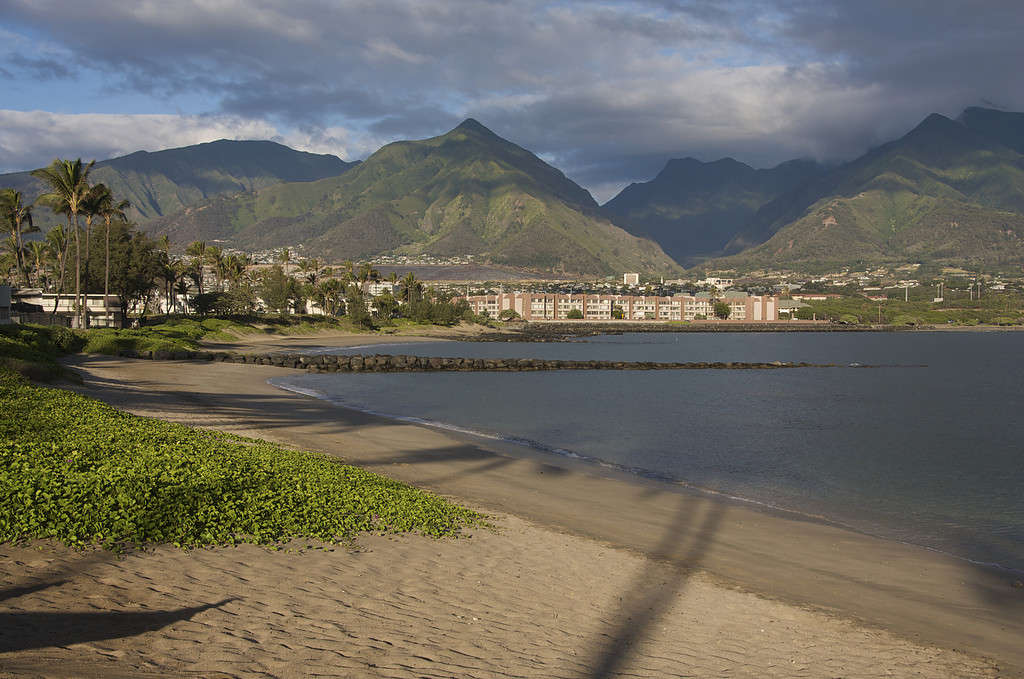
Kahului Harbor is the center of trade on the island of Maui.
©andy jackson/iStock via Getty Images
Hosting an airport and seaport, Kahului is always busy. The former sugar plantation becomes a commercial harbor in the county of Maui, which also touts above-average schooling.
Population
The population of Kahului is more than 28,000. Asian and two or more races dominate the population racial makeup at 55.9% and 19%. Only 9.2% Hispanic and 1% African American people comprise the whole population. Only 23.9% have a bachelor’s degree or higher in the city. The population per square mile of Kahului is 1,961 people.
Total Land
Kahului is 14.3 square miles. Home to the Maui Arts and Cultural Center and Maui Nui Botanical Gardens, the Hawaiin city also hosts Kanaha Beach Park. Temperatures range between 64 to 87 degrees; unlike other large cities, it can get below 58 degrees. Popular for its schools and parks make this city family-friendly.
Economic Impact
The median household income in Kahului is $82,219, with an 8.4% poverty rate. Up to 61.4% of the population owns their own home. Food services, health care, and retail trade employ nearly half of Kahului’s 15,000 workforce.
9. Mililani

Mililani is the hub of Honolulu City and County and is famous for its parks.
©Teri Wertman/iStock via Getty Images
In the center of Oahu, Mililani evolved from pineapple fields between two volcanic mountain ranges to an attractive residential region known for its suburban feel and sunshine.
Population
The population of Mililani is just over 28,000. The Asian population is 47%, and the White population is 13.7%, with 30.3% having two or more races. Unlike most cities, the female population is less than males at 48.7%. The population per square mile of Mililani is 7,014 locals.
Total Land
Mililani is only four square miles. Temperatures range between 60 to 80 degrees, rarely dipping lower than 58 or getting higher than 87 degrees. The central hub of the city and county of Honolulu, Mililani Golf Club is yet another reason the area attracts affluent residents. The town also lauds Mililani District Park, a wide-open spread dedicated to sports and recreational activities.
Economic Impact
The median household in Mililani averages $108,192 a year, and the poverty rate is 5.3%. Mililani Town’s top employers are healthcare, public administration, and educational services. Not to mention all that green the Mililani Golf Club brings on top of a plateau overlooking mountains.
10. Ewa Gentry
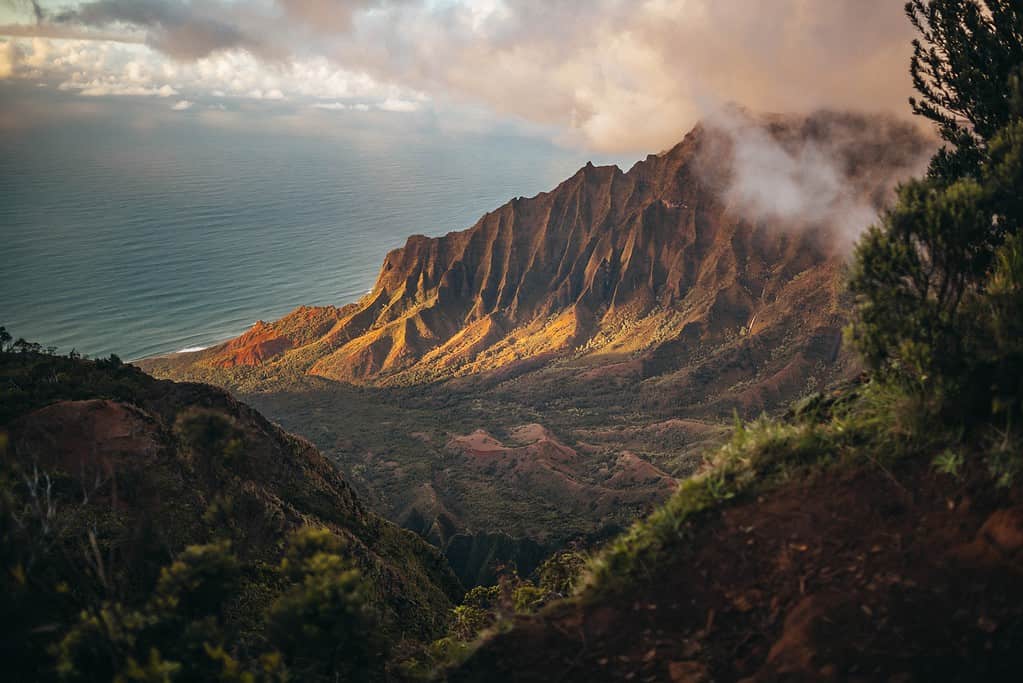
Known for its many outdoor activities, Ewa Gentry is a hidden gem on Oahu.
©iStock.com/Farres Laiadhi
Long gone are the cane fields of Ewa Gentry, the leeward side of Oahu. The last of the largest cities in Hawaii is notable for surfing, golfing, and hiking, not to mention great food and retail.
Population
The population of Ewa Gentry is just over 25,000 people, of which 48% are Asian. There is also a 14.6% Hispanic population and a 5.6% Native Hawaiian or Pacific Islanders. The population per square mile in Ewa Gentry is 12,074 people.
Total Land
Only 2.1 square miles, Ewa Gentry does not have to be big to prove itself worth. The landscape comprises three beaches: Oneula, White Plains, and Nimitz. For those who prefer to surf without sealife, Ewa Gentry is one city that sports a deep-water standing surf wave fit for pros or beginners. Coral Crater Adventure Park is another area that offers a thrilling feel of climbing a mountain but harnessed in for safety.
Economic Impact
The median household income in Ewa Gentry is $117,186, with a 2.7 % poverty rate. Food services account for 15.6% of Ewa Gentry’s workforce, more than double the 7% national average, while healthcare and public administration are two of the area’s other top fields of employment.
Hawaii’s Largest Cities
With so many Hawaiian hot spots in the largest cities, choosing the best place to visit or settle down takes time and research. Knowing essential facts about the city’s demographics, culture, and overall surroundings narrows the list.
While some may prefer Urban Honolulu holidays surrounded by crowds and entertainment, others may want to spend their Big Island vacation in more remote, family-friendly spots. With so many different locations, a little information on each helps decide a final destination. Big or small, crowded or not, Hawaii’s most prominent cities offer what its sister states cannot provide by being surrounded by gorgeous bodies of water. Visit or live, Hawaii’s 10 largest cities have it all.
Hawaii Population
| Rank | City | Total Population | Population Density | Demographics |
|---|---|---|---|---|
| 1. | Honolulu | 995,638 | 5,783 | 23.2% two or more races |
| 2. | East Honolulu | 50,922 | 2,213.4 | 47,6% Asian |
| 3. | Pearl City | 45,295 | 4,966.6 | 54.7% Asian |
| 4. | Hilo | 44,186 | 824 | 38% two or more races |
| 5. | Waipahu | 43,485 | 16,237.9 | 67.9% Asian |
| 6. | Kailua | 40,514 | 5,212.8 | 41.4% White |
| 7. | Kaneohe | 37,430 | 5,720.6 | 39.8% Asian |
| 8. | Kahului | 28,219 | 1,961 | 55.9% Asian |
| 9. | Mililani | 28,121 | 7,014.5 | 47% Asian |
| 10. | Ewa Gentry | 25,707 | 12,074.7 | 48% Asian |
Hawaii Land Area
| Rank | City | Square Miles | Climate | Attractions |
|---|---|---|---|---|
| 1. | Honolulu | 68.42 | Tropical wet & dry | Manoa Falls, Hanauma Bay |
| 2. | Hilo | 53.62 | Tropical rainforest | Panaewa Rainforest Zoo, Volcanoes National Park |
| 3. | East Honolulu | 23.01 | Tropical | Dole Plantation, Diamond Head |
| 4. | Kahului | 14.39 | Tropical, mild | Haleakalā National Park |
| 5. | Pearl City | 9.12 | Tropical wet & dry | Pearl Harbor |
| 6. | Kailua | 7.77 | Tropical savanna | Kailua Beach Park |
| 7. | Kaneohe | 6.54 | Tropical steppe | Hoʻomaluhia Botanical Garden |
| 8. | Mililani | 4.01 | Tropical wet & dry | Mililani Memorial Park |
| 9. | Waipahu | 2.68 | Hot summer, mild winter | Plantation Village |
| 10. | Ewa Gentry | 2.13 | Hot summer, mild winter | White Plains Beach |
The photo featured at the top of this post is © Shane Myers Photography/Shutterstock.com
Thank you for reading! Have some feedback for us? Contact the AZ Animals editorial team.







